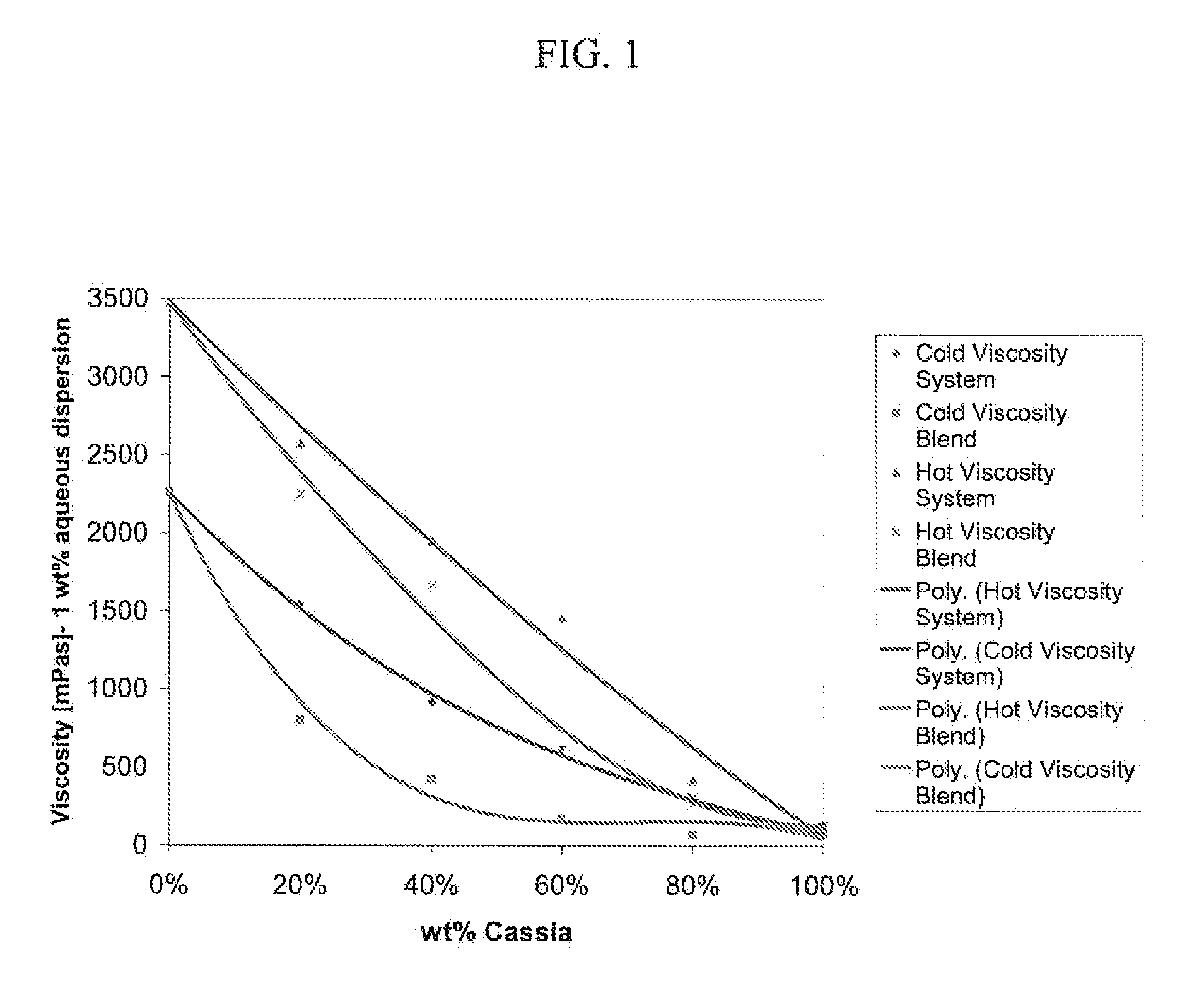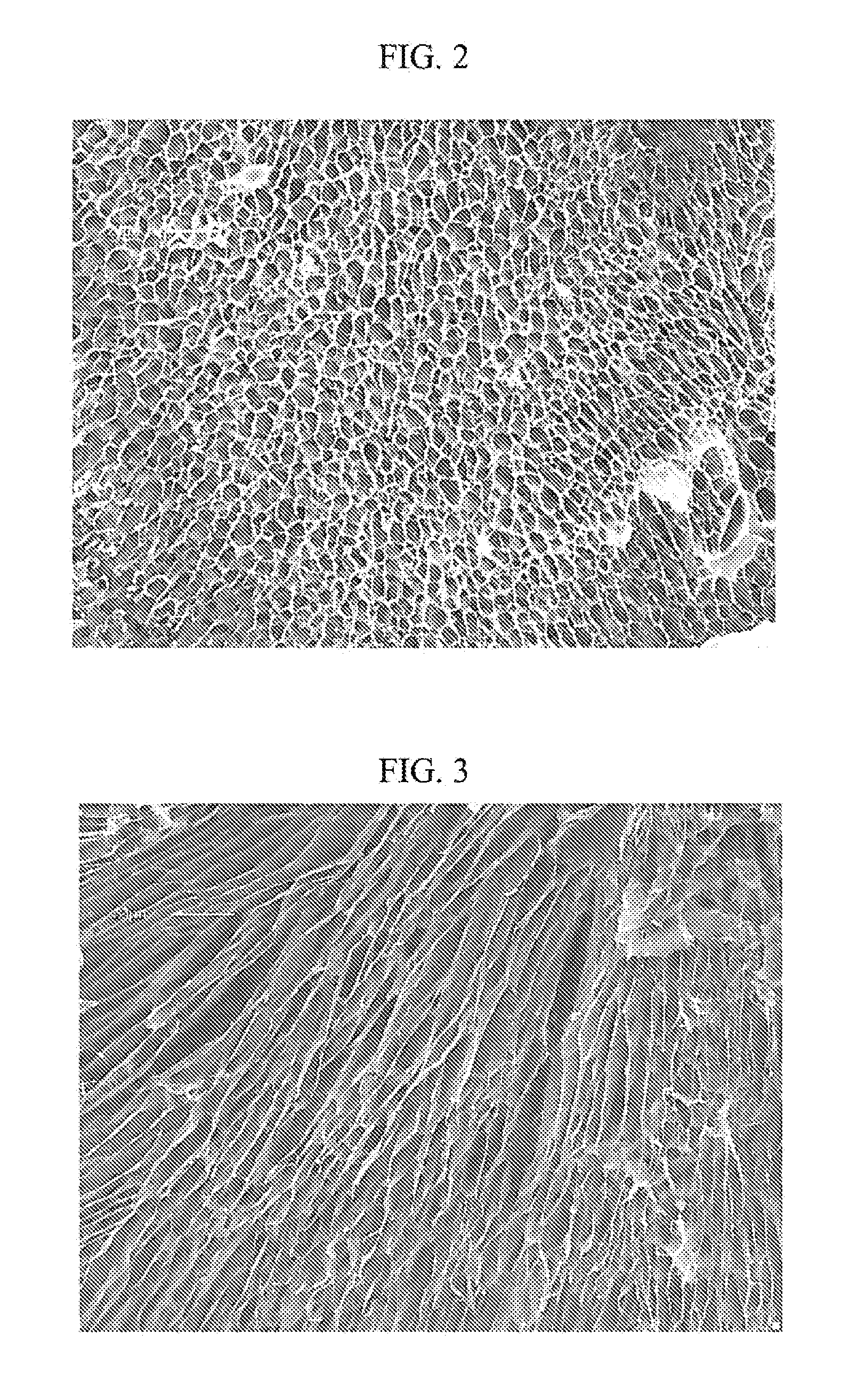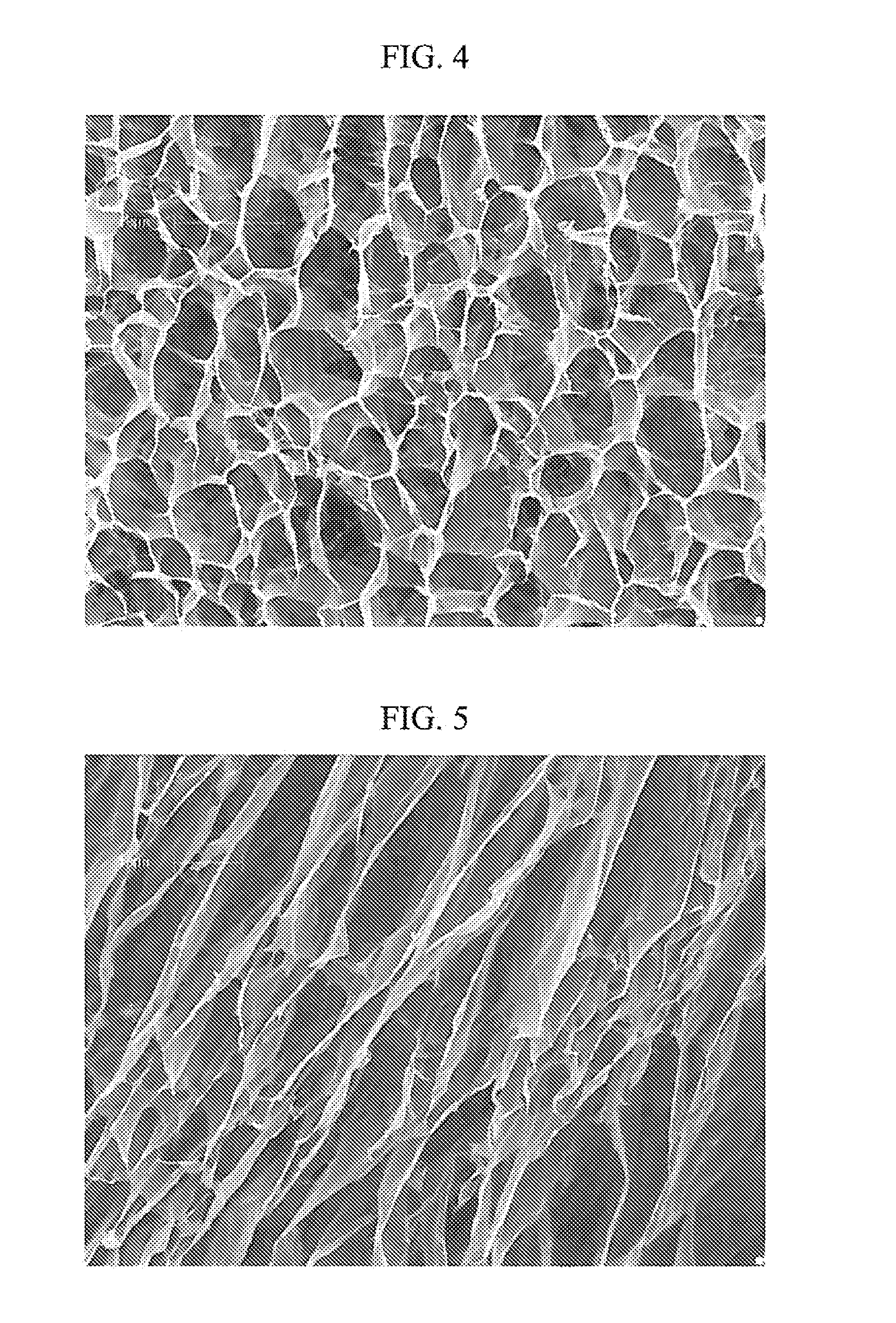Hydrocolloids and Process Therefor
a technology of hydrocolloids and hydrocolloids, applied in the field of substantial pure hydrocolloids, can solve the problems of inability to apply this process to i>cassia /i>flour, limited use in the production of products requiring high clarity, and inability to achieve high-quality results
- Summary
- Abstract
- Description
- Claims
- Application Information
AI Technical Summary
Problems solved by technology
Method used
Image
Examples
example 1
[0296]Following the general procedure of the present invention one part of cassia split (endosperm flour of cassia) having an original chrysophanol content of 9.5 ppm (as determined by HPLC) was processed. The level of chrysophanol in the hydrocolloid obtained has been determined by HPLC to be less than 1 ppm.
[0297]In a comparative experiment following the conditions described in U.S. Pat. No. 4,840,811 starting from the same cassia split the anthraquinone level was only reduced by 50%, even after several washings.
example 2
[0298]Split of cassia was milled using traditional milling technology to a powder having a particle size of less than 250 ppm. The product obtained will be designated “Diagum™ CS cassia standard”.
[0299]The same raw cassia split was swollen with water in a ratio of cassia split:water is 1:3. Subsequently, the swollen material was minced and homogenized using a commercially available meat mincer. The still moist product was dried, sieved and particles having a particle size >250 μm were subjected to a further grinding step.
[0300]The gel of the cassia prepared as above, 2.50 g of kappa-carrageenan (Danagel PF8263) and 250 g potassium chloride were dry mixed and thereafter added to 192.5 g of water. The suspension was heated in a water bath at 90° C. while stirring. The solution obtained was poured into a can. After cooling to about 70° C., the loss of water was compensated. The solution is poured into the above mentioned cubic jelly boxes and were allowed to stand for 4 hours at 20° C....
example 3
[0302]In the following experiment, it is demonstrated that if the splits of different hydrocolloids are wet processed together according to the method of the present invention the galactomannan hydrocolloid (blend) has better performance characteristics compared to a mixture of the mixed galactomannan hydrocolloids.
[0303]a) Cassia hydrocolloid was prepared according to the method described above. The powderous cassia hydrocolloid was dry mixed with kappa-carrageenan (Danagel PF8263) in various ratios and KCl and the performance of said blend was measured.
[0304]b) Mixtures of cassia split and carrageenan of various ratios were swollen with water in a weight ratio of 1:3, mixed and subsequently minced together in a meat mincer. The mincing step was repeated 5 times. The product obtained was further processed as described above and the performance of said coprocessed system was determined. In all cases, the gel consists of 1% hydrocolloid (galactomannan hydrocolloid and carrageenan), 0...
PUM
| Property | Measurement | Unit |
|---|---|---|
| w/w | aaaaa | aaaaa |
| viscosity | aaaaa | aaaaa |
| break strength properties | aaaaa | aaaaa |
Abstract
Description
Claims
Application Information
 Login to View More
Login to View More - R&D
- Intellectual Property
- Life Sciences
- Materials
- Tech Scout
- Unparalleled Data Quality
- Higher Quality Content
- 60% Fewer Hallucinations
Browse by: Latest US Patents, China's latest patents, Technical Efficacy Thesaurus, Application Domain, Technology Topic, Popular Technical Reports.
© 2025 PatSnap. All rights reserved.Legal|Privacy policy|Modern Slavery Act Transparency Statement|Sitemap|About US| Contact US: help@patsnap.com



